The next-gen MacBook Pro with Retina Display Review
by Anand Lal Shimpi on June 23, 2012 4:14 AM EST- Posted in
- Mac
- Apple
- MacBook Pro
- Laptops
- Notebooks
The King of All Notebook Displays
For years Apple has been shipping some of the best displays in consumer notebooks, but the MacBook Pro’s Retina Display is in a league of its own. While I never liked the phrase “painted on” in reference to the iPad and iPhone Retina Displays, that’s the best way I can describe the effect the MacBook Pro’s Retina Display has on me. Text really does look painted on. The effect is really the result of two things.
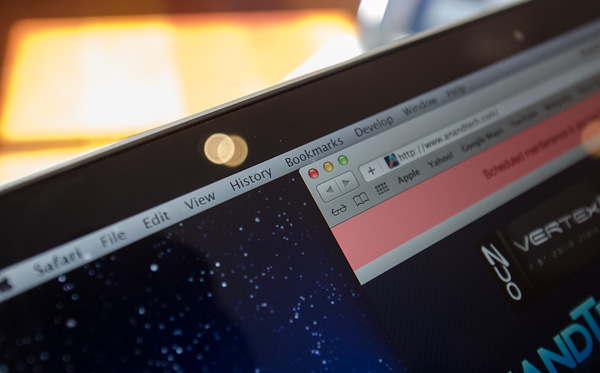
The first is Apple’s removal of its cover glass. LCD panels aren’t particularly attractive, they are ugly squares composed of two pieces of glass and a number of filters/polarizers. To hide the ugly edges, display makers wrap bezels around the display. Most people aren’t fond of bezels so next came a ton of effort to minimize bezel size. An alternative is to simply place a third piece of glass over the entire LCD assembly and make it look as if the bezel and LCD panel are integrated. This outermost layer is known as a cover glass and is what Apple uses on all of its glossy displays. If you’ve ever taken apart a Cinema/Thunderbolt Display or a newer iMac you’ll know that the cover glass is literally just a piece of glass that you have to remove with some suction cups.
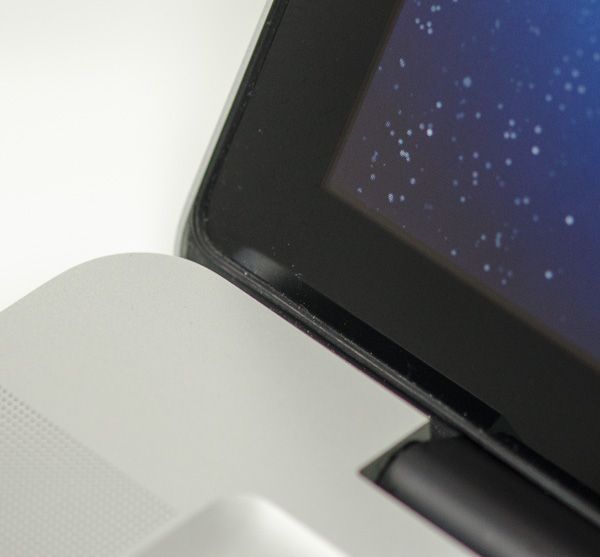
Non-Retina MacBook Pro, notice the gap between the outermost LCD glass and the cover glass
The MacBook Pro’s Retina Display does away with the cover glass and instead uses a fairly unique LCD assembly. There are still two pieces of glass but the outermost glass is actually a different size and shape - it integrates a bezel. By integrating the bezel into the outermost glass in the LCD stack you get the same effect as a cover glass but without the added reflections it introduces.
You also limit the possibility of dust getting trapped between the cover glass and the LCD. The danger is that you no longer have a protective piece of glass in front of your expensive new LCD. If you scratch the display you're scratching the LCD itself. While this has been true for conventional matte displays for a while, it's worth mentioning if you're used to Apple's glossy displays where you did have that added security layer.
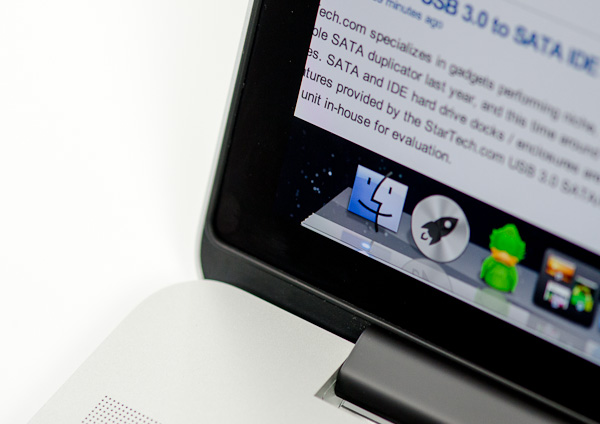
The MacBook Pro with Retina Display, no gap, no cover glass
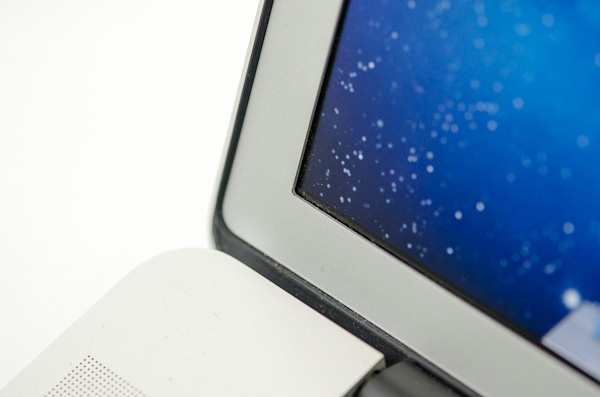
The 2011 MacBook Pro with High-Res Matte display option, no cover glass, top bezel

From left to right: 2010 High Res Glossy MBP, 2012 rMBP, 2011 High Res Matte MBP
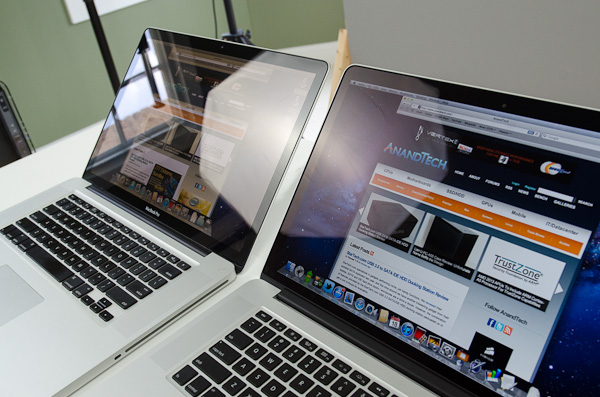
Glare handling indoors - 2011 High Res, Glossy MBP (left) vs 2012 rMBP (right)
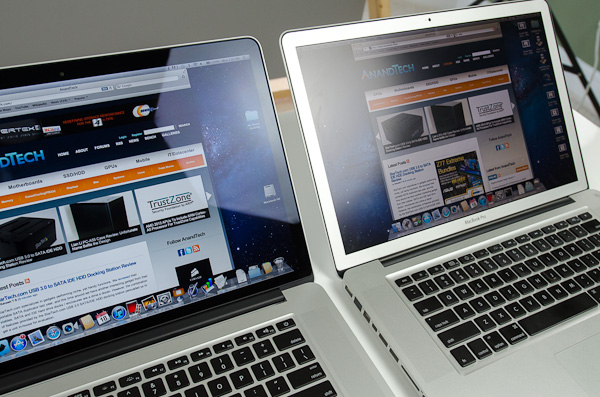
Glare handling indoors - 2012 rMBP (left) vs. 2011 High Res, Matte MBP (right)
The Retina Display is also obviously an extremely high resolution panel at 2880 x 1800. Note that this is 44.6% more pixels than Apple’s 27-inch Thunderbolt Display, and 26.6% more pixels than the 30-inch panels that we’ve loved for so long - all in a 15.4-inch notebook display.
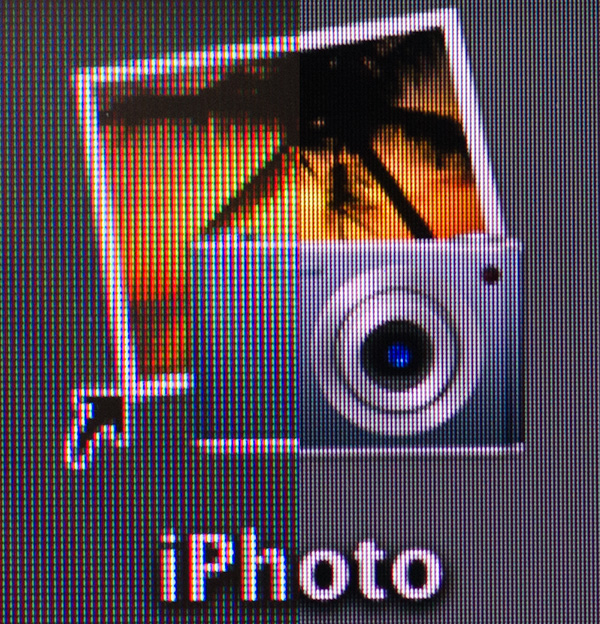
An iPhoto shortcut, High Res 2011 MBP (left) vs. Retina Display MBP (right)
At 220 pixels per inch it’s easily the highest density consumer notebook panel shipping today. At normal viewing distances and even with my face closer than I’m comfortable putting it I simply cannot discern individual pixels.
It’s the combination of these two elements, the removal of the cover glass and the insanely high pixel density that makes everything from text to UI elements just look painted on the new Retina Display. And the effect is gorgeous. I’ve never seen a prettier panel and it’s actually ruined me for pretty much all other displays, notebook and desktop.
While I can appreciate the iPad’s Retina Display, the impact from the MacBook Pro’s display is even more significant. Perhaps it’s because I still spend so much time working on a standard, non-tablet display, but I’m far more excited about this display than anything else Apple has delivered under the Retina moniker.
It’s not just pixel density that Apple has to offer here. Similar to its Retina Displays in the iPhone and iPad, the MacBook Pro’s Retina panel ditches TN in favor of IPS technology. The result is an incredible improvement in viewing angles. On a notebook I don’t spend a lot of time viewing it from far left/right angles, although I see the benefit when I’ve got others huddled around my display. Here the panel performs admirably - you lose brightness at far left/right angles but there’s no perceivable color shift. In fact, the painted on effect is even more impressive at these far left/right viewing angles.
For a single user however the more impressive characteristic is just how good the display looks at vertically off-center angles. I wrote much of the initial parts of this review while on an airplane in coach, which with a 15-inch notebook on my lap means I’m going to be looking at the display at a weird angle to begin with. The thinner rMBP doesn’t do enough to make the airplane usage model any better if the person in front of you decides to recline, but the IPS panel does make the display perfectly usable at the off-center angle you’ll inevitably have to deal with.
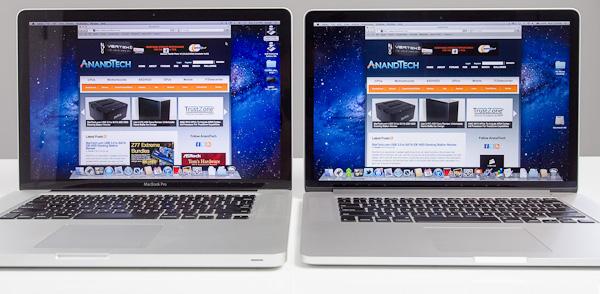
2010 High Res, Glossy MBP (left) vs. 2012 rMBP (right)
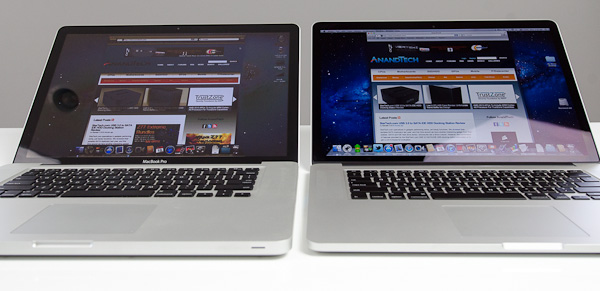
Hello colorshift!
2010 High Res, Glossy MBP (left) vs. 2012 rMBP (right)


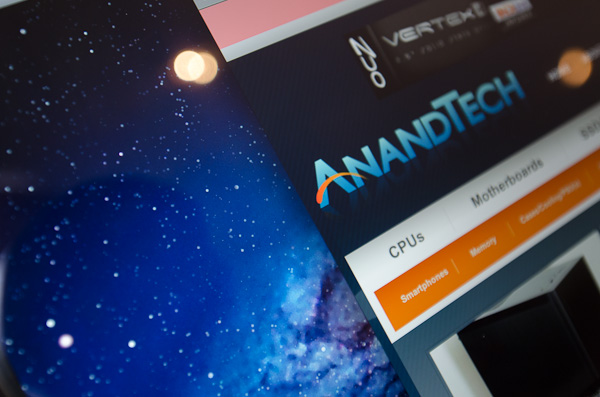
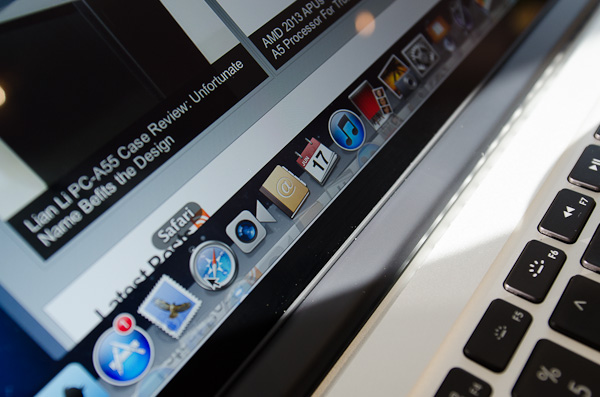
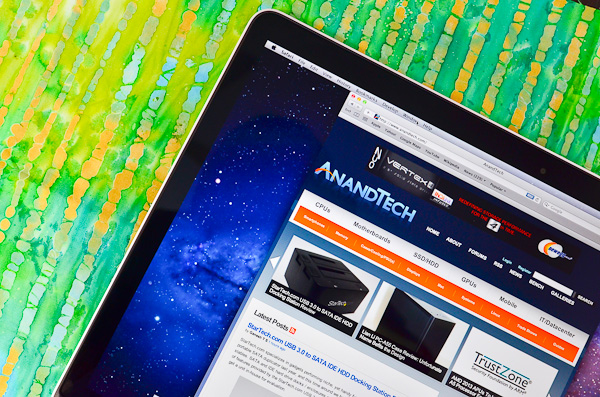
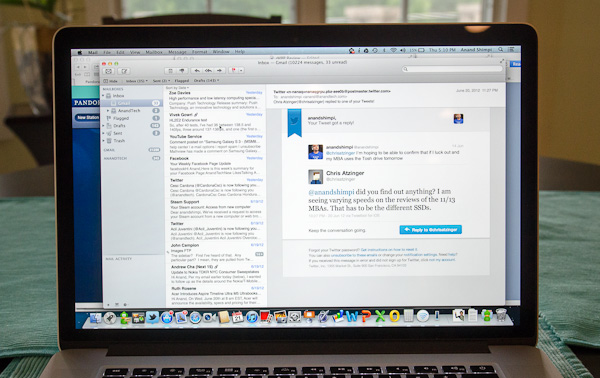
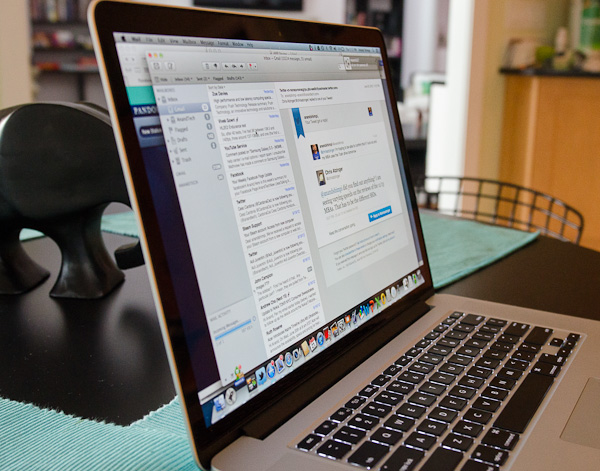








471 Comments
View All Comments
ciparis - Saturday, June 23, 2012 - link
Personally I'd much rather plug a single TB port into (for example) a TB monitor, which has a bunch of USB things plugged in, than plug in a bunch of USB things every time I move my laptop: point being, 2 USB is plenty for me -- I never want to be plugging that much crap into my laptop (even 2 gets annoying).DeciusStrabo - Sunday, June 24, 2012 - link
Even better would be a real dock instead of the half-backed version a Thunderbolt display gives you.dagamer34 - Sunday, June 24, 2012 - link
2 Thunderbolt docks: http://www.anandtech.com/show/5933/thunderbolt-doc...Only problem is price, but that will decrease over time.
Lepton87 - Saturday, June 23, 2012 - link
What's the point in using such a high resolution if 1920x1200 would be good enough to be called retina display? If you already can't see individual pixel, does it make a difference if you have a higher resolution? Seems like needless load on graphic card. Viewed from 17 inches on a 15'' panel 1920x1200 would be all that is needed to classify a screen "retina" anything higher than that seems like marketing and nothing else.UltraTech79 - Saturday, June 23, 2012 - link
Yeah guys, and whats the point in faster CPUs too? 486 is fast enough for most things if programmed right!hurrr
Lepton87 - Saturday, June 23, 2012 - link
Are you trolling or what? People already can't see individual pixels on a resolution of 1920x1200 on a 15'' panel. What do we accomplish by increasingPPI in on already retina display. And that's according to their own calculations involving PPI and the monitor monitor size and viewing distance. So, 1920x1200 15'' would also be retina and it would be far less consuming not only in therm's of graphic hardware but only CPU performance. Why was that not even in the article?
apple used a panel that has 2.35 more Pixel then a panel that would also be retina. So if both screens are of similar quality (ISP) and both are retina,why would someone pick the higher resolution screen. It just places unwarranted stress on GPU and CPU or components.
TL;DR
Why didn't they put IPS 1920x1200 panels. They also would be retina from normal viewing distance for laptons. 2880x1880 Seems like a huge wast of graphics performance and cpu as well.
jbwow - Saturday, June 23, 2012 - link
It is apparent from your comment that you have not actually seen the screen in question. You really can tell the difference. Instantly.Heathmoor - Friday, July 6, 2012 - link
The difference compared to what?wfolta - Saturday, June 23, 2012 - link
You can clearly see the difference, and in fact I tend to use my rMBP closer to me than I used my previous 17" MBP, precisely because it's so razor-sharp.Lepton87 - Saturday, June 23, 2012 - link
my previous 17" MBPYour previous 17'' had a much lower ppi then 15'' 1920x1200. I'm not saying that it's not an upgrade, all I'm saying this upgrade is a bit over the top. bit over the top. Previous resolution on apple screen were certainly to Small.
What irks me the most is that there exists a laptop with a higher resolution than my desktop monitor. even macbook LCD has a higher resolution than my desktop monitor. .